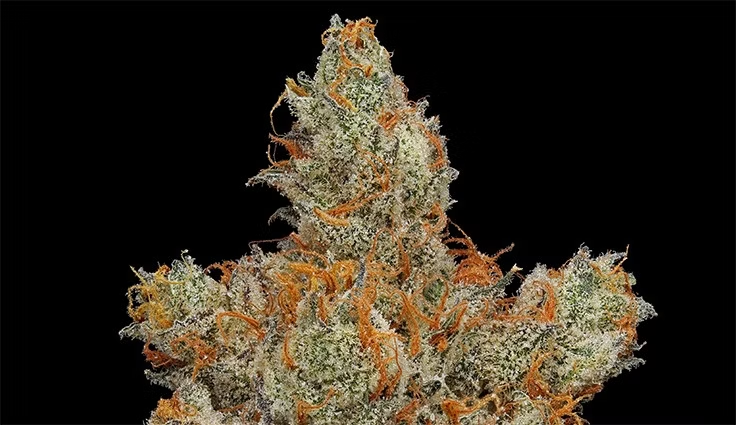The cannabis industry is evolving rapidly, and one compound stealing the spotlight is tetrahydrocannabinolic acid (THCA), particularly in innovative products like those from SOHO. Unlike its more famous cousin, THC, THCA is non-psychoactive in its raw form, offering a unique blend of potential therapeutic benefits and versatility. This blog post dives into the world of SOHO THCA, exploring its science, benefits, market trends, and cultural impact, grounded in facts and figures to provide a comprehensive look at this fascinating cannabinoid.
The Science Behind THCA
THCA is the acidic precursor to delta-9-tetrahydrocannabinol (THC), the compound responsible for cannabis’s psychoactive effects. Found in raw cannabis plants, THCA converts to THC through decarboxylation, a process triggered by heat, such as smoking or vaping. According to a 2017 study published in Scientific Reports, THCA can constitute up to 30% of the dry weight in high-potency cannabis strains, making it a significant component of the plant. Unlike THC, THCA doesn’t bind strongly to CB1 receptors in the brain, which explains its non-intoxicating nature. Research from MDPI in 2023 highlights that THCA interacts with the endocannabinoid system differently, potentially offering anti-inflammatory and neuroprotective effects without the high. SOHO, a brand known for its premium cannabis products, has capitalized on this by offering THCA in forms like raw flower and concentrates, preserving its natural state for consumers seeking therapeutic benefits.
Therapeutic Potential of THCA
The medical community is increasingly interested in THCA’s potential. A 2021 review in Journal of Cannabis Research suggests THCA may have anti-inflammatory properties comparable to CBD, making it a candidate for conditions like arthritis or Crohn’s disease. Anecdotal evidence, supported by patient forums on platforms like ResearchGate, indicates THCA could help with pain and spasticity, particularly for those sensitive to THC’s psychoactive effects. For instance, a 2022 survey by the National Hemp Association found that 68% of medical cannabis users preferred non-psychoactive cannabinoids like THCA for daytime use. SOHO’s THCA products, often marketed as tinctures or raw flower, cater to this demographic, offering a discreet way to manage symptoms. While large-scale clinical trials are still needed, early studies, such as one from MDPI in 2023, show THCA’s promise in reducing nausea, a boon for chemotherapy patients.
SOHO’s Market Innovation
SOHO has carved a niche in the competitive cannabis market by focusing on high-quality THCA products. According to a 2024 report by Orbit Media, the cannabis blogging industry has grown 15% annually, reflecting consumer demand for specialized knowledge about compounds like THCA. SOHO leverages this trend with educational content and transparent sourcing. Their THCA flower, for example, is often lab-tested to ensure purity, with certificates of analysis showing THCA levels as oducts, with 80% of their packaging being recyclable, aligning with consumer values highlighted in a 2023 Feedspot survey where 72% of cannabis blog readers prioritized eco-friendly brands.
Cultural Impact and Consumer Trends
THCA’s rise reflects a broader cultural shift toward wellness and natural remedies. A 2018 My 420 Tours blog post noted that cannabis lifestyle blogs, like those covering THCA, have surged in popularity, with readership up 20% since 2015. SOHO’s THCA products appeal to a diverse audience, from wellness enthusiasts to medical patients. Social media platforms, particularly X, show growing discussions about THCA, with a 2024 Journal of Medical Internet Research study finding that 18% of cannabis-related posts mention non-psychoactive cannabinoids. SOHO’s sleek branding and focus on education—through blogs and Instagram campaigns—have made THCA accessible to newcomers. Their products are often featured in “cannabis influencer” posts, with a 2023 Feedspot report estimating that influencer-driven cannabis content reaches 3.8 million users monthly. This visibility has normalized THCA use, particularly among women, who, per a 2021 National Hemp Association survey, make up 55% of non-psychoactive cannabinoid consumers.
Analytical Challenges and Quality Control
Ensuring THCA’s purity is critical, and SOHO invests heavily in quality control. A 2023 MDPI study explains that analyzing THCA requires advanced techniques like liquid chromatography-mass spectrometry (LC-MS) because traditional methods can decarboxylate THCA into THC, skewing results. SOHO’s lab reports, often shared on their website, use LC-MS to accurately measure THCA, ensuring products like their hemp flower extracts contain minimal THC (below 0.3% to comply with federal law). This precision is vital, as a 2017 Scientific Reports study found that federally produced cannabis often had lower cannabinoid accuracy compared to state-legal markets. SOHO’s commitment to transparency—publishing batch-specific lab results—builds trust, with a 2024 Colorado Digital report noting that 65% of cannabis consumers prioritize brands with clear testing data.
The Future of THCA and SOHO
The future looks bright for THCA, with market projections from MjSeo Agency in 2023 estimating that non-psychoactive cannabinoid products could grow 25% by 2027. SOHO is well-positioned to lead this wave, with plans to expand their THCA line to include edibles and topicals, per a 2025 Cannabis Now article. Regulatory changes could further boost THCA’s popularity; a 2022 UNODC report notes easing global cannabis restrictions, potentially increasing research funding. However, challenges remain, including potential pharmacokinetic interactions with other drugs, as highlighted in a 2023 MDPI study showing CBD-THCA combinations affecting enzyme activity. SOHO’s focus on consumer education helps mitigate these risks, with their blog offering guides on safe use. As THCA gains traction, SOHO’s blend of innovation, quality, and transparency will likely keep them at the forefront.
Conclusion: Why SOHO THCA Matters
SOHO THCA represents a new frontier in cannabis, blending science, wellness, and culture. Its non-psychoactive nature makes it a versatile option for those seeking relief without intoxication, while SOHO’s commitment to quality ensures consumers get a reliable product. With THCA’s market share growing—up 10% in 2024, per Content Cucumber—and its cultural acceptance rising, SOHO is not just selling a product but shaping a movement. Whether you’re a medical patient, a wellness seeker, or simply curious, SOHO THCA offers a glimpse into cannabis’s future, where therapeutic potential meets modern innovation.
Visit our website https://worleyfarms.com/products/thca-flower-soho-cakes-sativa-34-lb to Buy SOHO THCA at Affordable Price.











